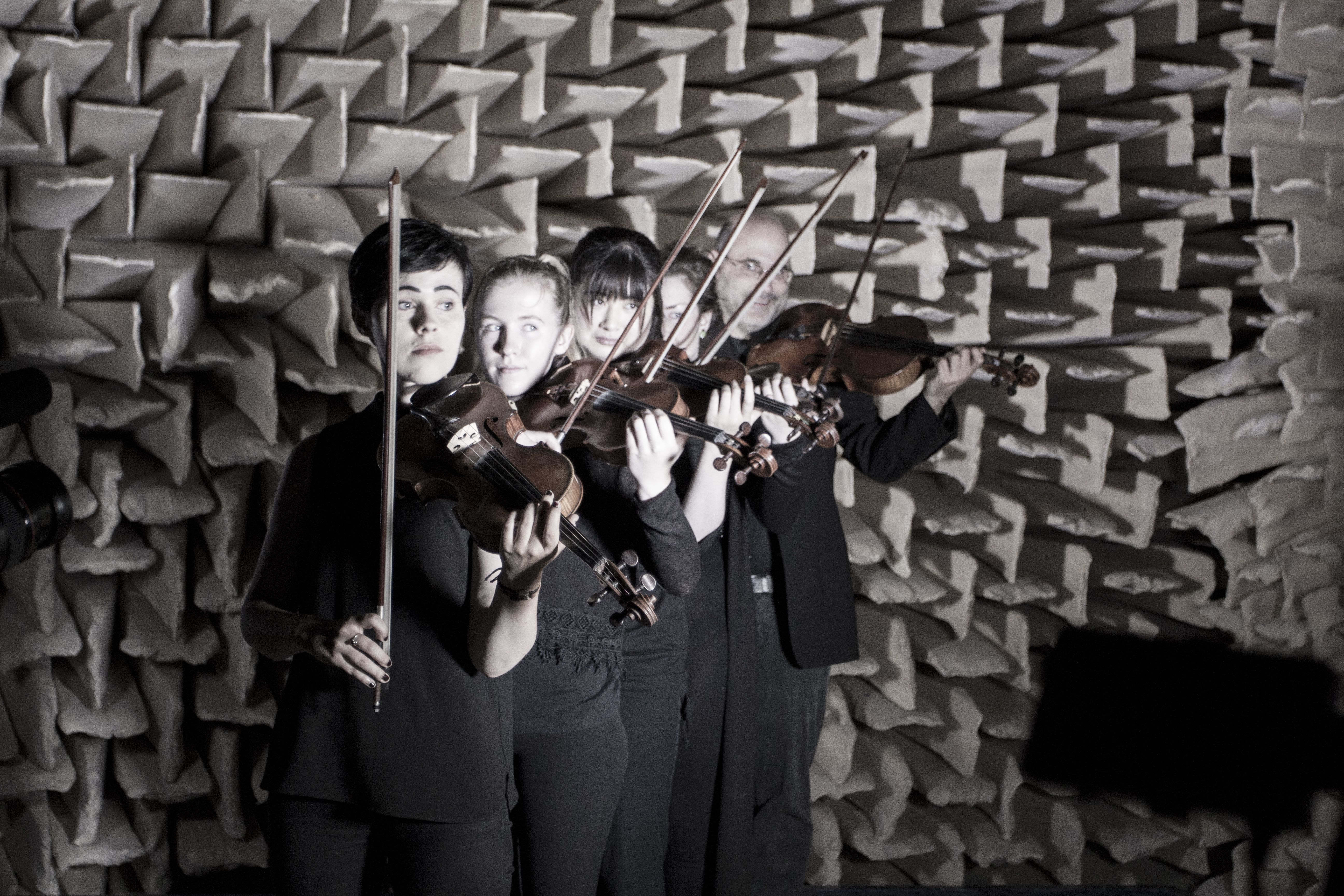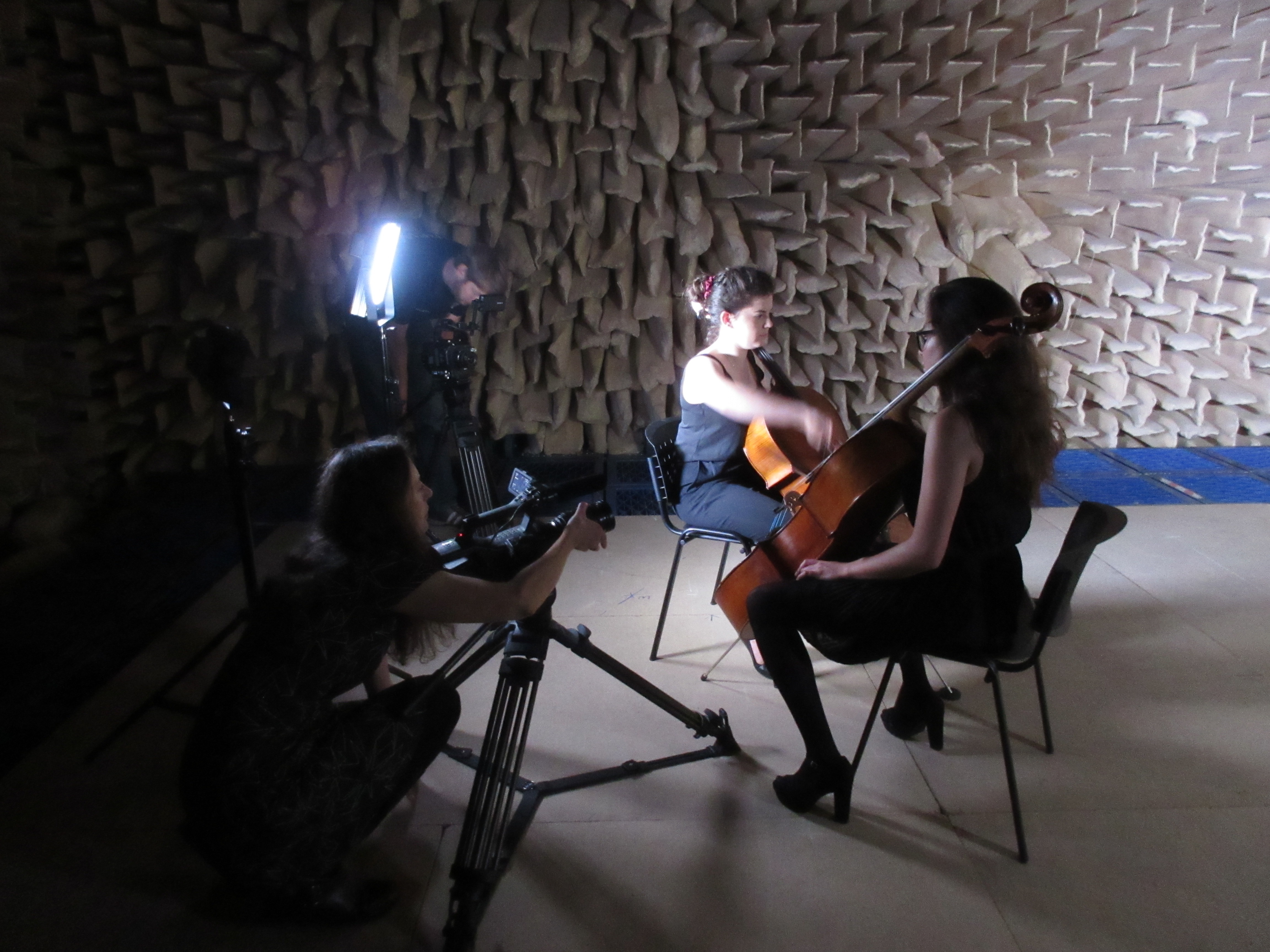The visuality of sound
Artist Aura Satz has been spending the year with us with funding from the Leverhulme Trust, working towards an installation at the university’s John Hansard Gallery. Midway through the project, she explains the work so far:

During my time as Leverhulme Artist-in-Residence at Southampton University hosted between the Institute of Sound and Vibration and the Music Department, I have enjoyed exchanges with various staff members in order to explore what kind of dialogues might be possible through my project. It quickly became apparent that this is a rare opportunity to work creatively with new cutting edge developments in sound distribution devised by ISVR, in particular the speaker array, a multi- channel surround listening sphere which spatialises the auditory experience. This is a chance to test ISVR’s sound sphere in an artistic context as a new creative tool, and we are in the process of creating a new, smaller 32-speaker bespoke version based on their previous scientific model, specifically for the installation at the John Hansard Gallery premiering in December 2015. We are making various changes to the original speaker array, using small Anthony Gallo speakers and a smaller sphere structure. Dr Filippo Fazi and his team have played a crucial part in devising, modelling, testing speakers and optimising this element of the project. After various meetings with staff in the Music Department, I am collaborating with composer Leo Grant to devise a soundscape to accompany the film and play through the multi-channel sphere. We have had a preliminary session to familiarise ourselves with the sound distribution interface in the ISVR audio lab, led by Dr Andreas Franck, and the collaboration will prove an interesting testing ground to explore the user-friendliness and creative potential of the software.
Initially my proposal drew on the concept of Wagner’s radical design for the Bayreuth Theatre’s orchestral pit, whereby the musicians are completely hidden under the stage, invisible to the audience. My film set out to uncover the visuality of sound, music and acoustics, which for the most part hover in the realm of the hidden or invisible, and to amplify acoustic and vibrational detail, both visually and sonically. After many frustrating attempts to organise a shoot in various orchestral pits in Southampton and London, I ended up visiting the rehearsals of the BBC Symphony Orchestra in Maida Vale. This proved extremely valuable and helped to focus my interest away from the idea of musical performance within a cramped concealed space, and more towards ways of conveying close-up musical gesture as abstract patterning. The groupings of various instruments following musical phrases evokes the patterns of windmills at sea, creating a visual logic of its own, almost autonomously musical in its own right. The decision to focus on string instruments as well as the use the speaker array further refined my thinking towards more insect-like, exoskeletal ideas informing the formal and compositional principles of the piece, and the sound composition will focus on small close-up sounds as well as more conventional musical elements. The sphere itself is shaping up in my mind like a giant inverted fly’s eye, through which participants will see the film as if through a skeletal grid of sorts.

The anechoic chamber in ISVR emerged as the ideal space in which to film string performers from the Music Department, though not for acoustic purposes. Effectively a dead space, or a rather a space with no reflections or echo, it uses fiberglass wedges placed in geometric sequences to absorb all sound. I was attracted to the geometric patterning, as well as the idea of musical gestures placed within a sonic vacuum. It is quite an unusual disembodied experience to spend extended time in the anechoic chamber, and I was especially grateful to the Southampton music students who allowed me to position them in rather awkward poses in order to achieve the best camera angles. Throughout the shoot I found that elements of musical gesture revealed their choreographic potential – aligning, contrasting, seeking each other out and deflecting. On occasions the bows start to look like nervous insects in an indecipherable mating game.
After the summer I will shoot the last section of the film under the guidance of Dr Matthew Wright, and this phase will involve high-speed footage of musical vibration. The plan is to create close-up abstract footage that will resonate with the material shot in the anechoic chamber, creating a blurring of scale and decipherability.

